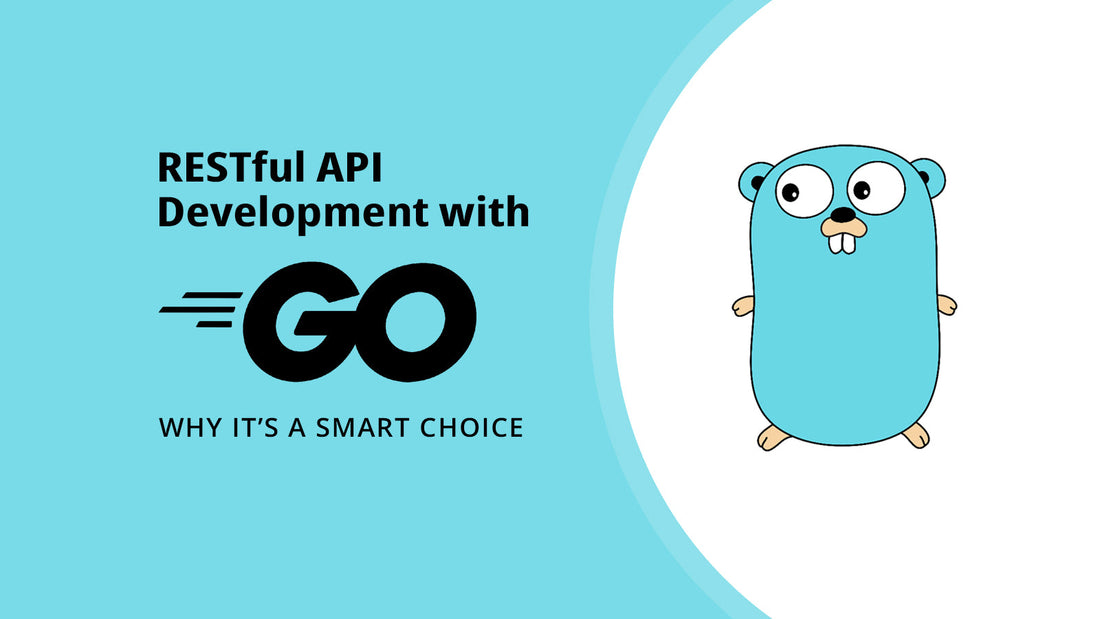
RESTful API Development with Go: Why It’s a Smart Choice
Share
web, mobile, and cloud applications. They enable communication between systems, services, and devices with speed and simplicity. While many programming languages can be used to build RESTful APIs, Go (also known as Golang) stands out as a powerful tool for developers seeking performance, reliability, and scalability.
In this blog, we explore what makes Go a smart choice for RESTful API development and why it's gaining widespread adoption in startups and enterprises alike.
What is a RESTful API?
A RESTful API (Representational State Transfer) is a software architecture style that leverages standard HTTP methods—such as GET, POST, PUT, and DELETE—to access and manipulate resources on a server. RESTful APIs are:
- Stateless: Each request from a client contains all the information needed to process it.
- Scalable: Easily handle multiple client requests across distributed systems.
- Flexible: Compatible with a wide range of platforms and languages.
REST is widely used due to its simplicity, ease of integration, and performance.
Why Go for API Development?
Go, developed by Google, has rapidly become a favorite for building backend services and APIs. Here’s why:
1. High Performance
Go is a compiled language, which means it translates directly into machine code. This makes Go applications exceptionally fast—an essential feature for APIs that handle high request volumes.
2. Built-in Concurrency
Go’s lightweight goroutines allow APIs to process multiple requests simultaneously without crashing or slowing down. This makes Go ideal for concurrent operations and real-time applications.
3. Simplicity and Readability
Go’s clean syntax and minimalistic approach make it easier to write and maintain code. This reduces development time and improves long-term codebase management.
4. Strong Standard Library
Go comes with a robust standard library, including native support for HTTP and JSON. This means developers can build RESTful APIs without relying heavily on external packages.
5. Cross-Platform Deployment
Go applications compile to standalone binaries and run seamlessly across operating systems. This makes deployment simple and cost-effective.
Industry Adoption and Use Cases
Many leading companies—including Uber, Netflix, Dropbox, and SoundCloud—use Go to build fast, scalable APIs and microservices. Common use cases include:
- Microservices Architecture: Go’s performance and simplicity make it ideal for microservices that need to interact via REST APIs.
- Cloud-Native Applications: Many cloud providers and Kubernetes tools are written in Go.
- Real-Time Systems: From messaging platforms to financial dashboards, Go handles concurrent processing with ease.
Best Practices for RESTful APIs in Go
If you're planning to build APIs with Go, consider these best practices:
-
Design with clear resource URIs (e.g.,
/users,/orders/123) - Use proper HTTP methods: GET for fetch, POST for create, PUT for update, DELETE for remove
-
Implement versioning to manage API changes over time (e.g.,
/api/v1) - Add validation and error handling for robustness
- Secure your API with authentication (e.g., JWT) and HTTPS
- Document your endpoints using tools like Swagger or Postman
Final Thoughts
Go offers an outstanding combination of performance, simplicity, and scalability for building RESTful APIs. Whether you're developing microservices, cloud-native apps, or high-throughput systems, Go equips you with the tools needed to build fast, reliable, and maintainable APIs.
For developers and teams seeking to modernize their backend systems or launch new digital services, learning RESTful API development with Go is a smart and future-proof investment.
